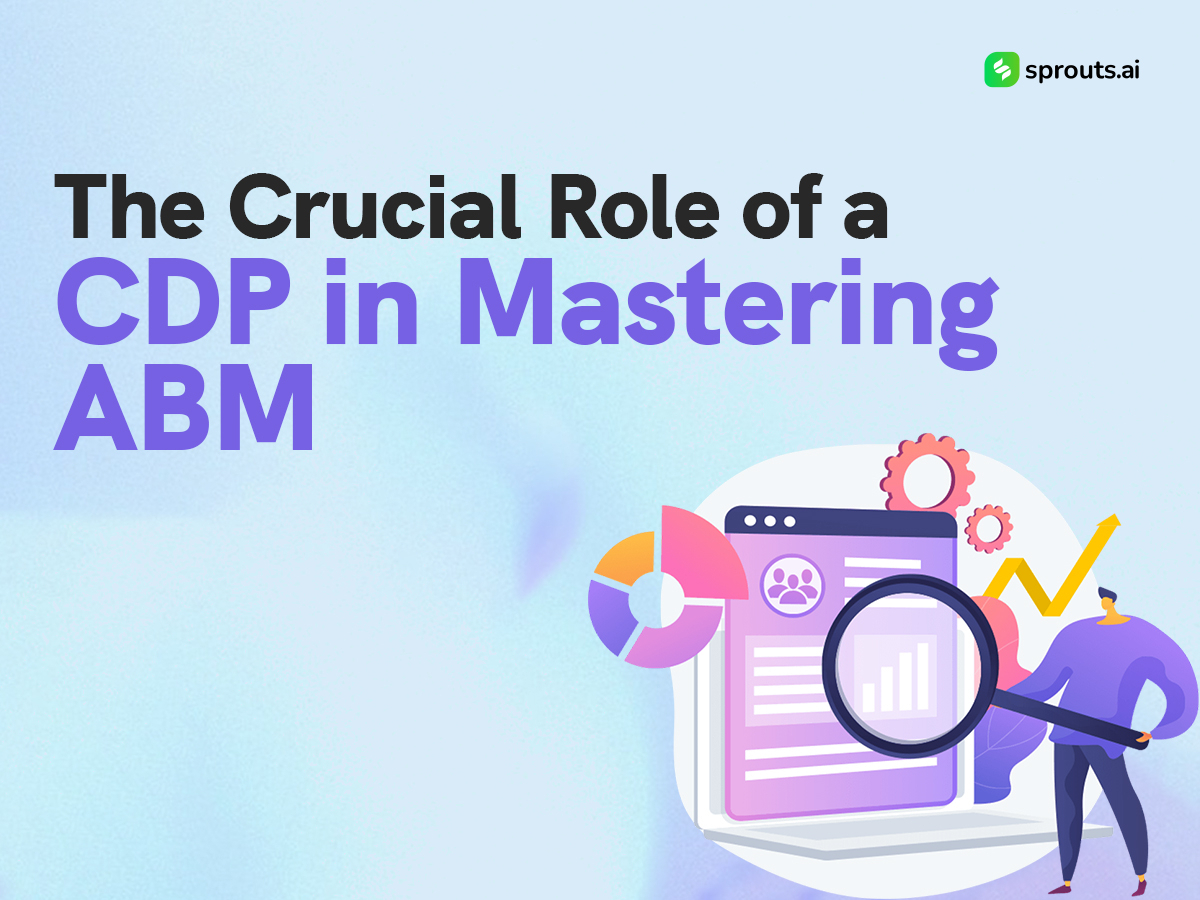Businesses constantly seek innovative strategies to reach and engage their target audience. One such strategy that has gained prominence recently is Account-Based Marketing (ABM). ABM is a highly focused approach that treats individual high-value accounts as separate markets rather than targeting a broader audience. When it comes to the success of ABM, the Customer Data Platform (CDP) emerges as a backbone, playing a pivotal role in the personalized marketing strategy.
Understanding Account-Based Marketing (ABM)
1. Precision Targeting: ABM involves identifying and targeting high-value accounts with a personalized approach. Instead of casting a wide net, businesses hone in on specific companies, delivering tailored content and experiences to resonate with their unique needs.
2. Collaborative Approach: ABM encourages collaboration between marketing and sales teams. These teams can create a seamless customer journey from the initial touchpoint to conversion by aligning their efforts.
3. Customized Content: Content is king, and in ABM, it reigns supreme. Tailoring content to address the challenges and goals of each targeted account ensures relevance and increases the likelihood of conversion.
The Significance of Customer Data Platforms (CDP) in ABM
Unified Data Repository: CDP serves as a centralized repository for customer data, aggregating information from various sources such as CRM systems, marketing automation platforms, and customer interactions. By consolidating data into a single source, a CDP provides a holistic view of the customer, enabling marketers to understand the entire customer journey.
360-Degree Customer Profiles: With a CDP, businesses can create comprehensive customer profiles that include demographic information, behavioral data, and interaction history. These detailed profiles empower marketers to develop highly targeted and personalized campaigns, a cornerstone of successful ABM.
Real-time Data Sync: CDPs ensure customer data is updated in real-time, allowing marketers to access the most recent information about their target accounts. Real-time data sync is crucial in ABM, enabling marketers to respond promptly to changing customer behaviors and preferences.
Segmentation and Targeting: CDPs facilitate data segmentation based on various criteria, allowing marketers to create highly targeted lists for ABM campaigns. Effective segmentation is key to delivering personalized content that resonates with specific accounts, enhancing the impact of ABM initiatives.
Enhanced Personalization: By harnessing the power of CDPs, marketers can personalize content at a granular level, tailoring messages, and offerings to the unique needs of each account. Personalization is the cornerstone of ABM’s success, creating a deeper connection between the brand and the targeted account.
Overcoming Challenges with CDPs in ABM Implementation
Integration Complexity: CDPs may face challenges when integrating with
existing systems. However, selecting a CDP with robust integration capabilities
can mitigate this issue.
Data Quality Concerns: The success of ABM relies heavily on accurate and high-quality data. Regular data audits and cleansing processes are essential to maintain data integrity within a CDP.
Privacy and Compliance: With data privacy regulations becoming more stringent,
businesses must ensure that their CDP complies with regional and
industry-specific privacy laws.
The Future of ABM and CDPs
As technology advances and customer expectations evolve, the synergy between CDPs and ABM is poised to become even more critical. Here are some trends to watch:
AI and Predictive Analytics: Integrating AI and predictive analytics within CDPs can enhance the ability to anticipate customer behavior, providing insights for more effective ABM strategies.
Cross-Channel Orchestration: Future CDPs may offer more sophisticated cross-channel orchestration capabilities, allowing marketers to integrate ABM efforts across various digital channels seamlessly.
Real-time Decisioning: CDPs may evolve to provide real-time decision-making capabilities, enabling marketers to make data-driven decisions on the fly and enhancing the agility of ABM campaigns.
A CDP serves as the bedrock, providing marketers with the tools and capabilities to orchestrate personalized and effective ABM campaigns. Mastering ABM with the right CDP drives immediate results and positions them for long-term success in building meaningful and profitable customer relationships.
As we look to the future, the collaboration between ABM and CDPs promises to redefine how companies engage with their most valuable accounts, ushering in an era of unparalleled personalization and customer-centric marketing. By harnessing the capabilities of CDPs in the context of ABM, businesses can unlock the full potential of their customer data, delivering personalized experiences that leave a lasting impact on their target accounts. As ABM continues to evolve, those who embrace the power of CDPs are poised to be at the forefront of this marketing revolution, forging more substantial and profitable customer relationships.

